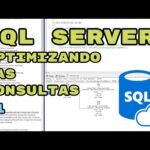Import MySQL Data with Flaskext: From Flaskext Mysql Module
Flaskext is a powerful tool for developers who work with the Flask framework. It provides a wide range of extensions that developers can use to add extra functionality to their applications. One of these extensions is the Flaskext MySQL module, which allows developers to interact with MySQL databases in their Flask applications.

Importing data from MySQL databases is essential for most applications, and Flaskext MySQL module makes this process easy and straightforward. With it, developers can import data from their MySQL databases and seamlessly integrate it into their Flask applications.
In this article, we will explore how developers can import MySQL data with Flaskext, using the Flaskext MySQL module. We will delve into the different features and capabilities of the module, and how developers can use them to import data from their MySQL databases. So whether you’re a seasoned Flask developer or just starting, this article is for you. Let’s get started!
Aprende cómo importar una base de datos MySQL en Flask
Flask es un framework de programación web que ofrece una gran flexibilidad para desarrollar aplicaciones. Además, Flask permite trabajar con diferentes tipos de bases de datos, entre ellas, MySQL.
En este sentido, aprender cómo importar una base de datos MySQL en Flask puede resultar de gran utilidad para desarrolladores que desean trabajar con grandes conjuntos de datos y requieren de un fácil acceso a ellos.
 Google Data Studio con MySQL: Visualiza tus datos fácilmente
Google Data Studio con MySQL: Visualiza tus datos fácilmenteImportar una base de datos MySQL en Flask es un proceso sencillo que requiere de algunos pasos previos. Primero es necesario configurar Flask para permitir la conexión con MySQL. Una vez realizada esta configuración, se procede a crear una conexión con la base de datos utilizando los datos de acceso correspondientes.
Luego, es necesario crear un objeto de cursor que permitirá realizar consultas y operaciones en la base de datos. Tras esto, se ejecutan las consultas necesarias para importar la base de datos a Flask.
Es importante tener en cuenta que, antes de importar la base de datos, se debe verificar que los datos presentes en ella se encuentren en un formato compatible con Flask. De lo contrario, pueden presentarse problemas al tratar de acceder a dicha base de datos.
Aprender cómo importar una base de datos MySQL en Flask permitirá a los desarrolladores manejar grandes cantidades de datos de manera sencilla. Además, conocer este proceso resulta de gran importancia para el correcto funcionamiento de aplicaciones que necesiten acceder a bases de datos.
En definitiva, dominar el manejo de bases de datos MySQL en Flask es una habilidad valiosa para los desarrolladores que buscan crear aplicaciones web de calidad.
Exploring the Benefits of Flask MySQL Extension for Web Development
 Haproxy MySQL: Una combinación perfecta para tu sitio web
Haproxy MySQL: Una combinación perfecta para tu sitio webFlask is a micro web framework written in Python language. Flask framework allows developers to create web applications that are easy to build, maintain and deploy. Flask is lightweight, flexible and easy-to-use framework, making it a popular choice among developers.
One of the most important elements in web development is the database. MySQL is one of the most popular databases used by developers around the world. Flask MySQL Extension is a powerful tool that can help developers to build web applications using Flask framework and MySQL database.
Benefits of Flask MySQL Extension:
- Easy to use
- Flexible
- Efficient
- Scalable
- Safe & Secure
Flask MySQL Extension simplifies the process of working with MySQL database in Flask applications. It takes care of the database connection, query execution, result processing, and error handling. Moreover, Flask MySQL Extension is highly flexible and can be easily configured to meet specific project requirements.
Efficiency is also one of the key benefits of Flask MySQL Extension. It helps to improve the performance of web applications by minimizing the number of database queries needed to retrieve data.
Scalability is also an important factor in web development. Flask MySQL Extension allows developers to easily scale their applications as per their needs and business requirements.
 Escalado horizontal de MySQL: cómo optimizar el rendimiento de tus bases de datos
Escalado horizontal de MySQL: cómo optimizar el rendimiento de tus bases de datosSecurity is a major concern when it comes to web development. Flask MySQL Extension has several built-in security features that help to protect against common security threats such as SQL injection attacks, cross-site scripting (XSS) attacks, and session hijacking.
Overall, Flask MySQL Extension is a great tool for developing web applications using Flask framework and MySQL database. It simplifies the development process, saves time, improves application performance, and provides high-level security to the app.
Reflection:
In conclusion, Flask MySQL Extension can make the process of web application development faster, easier and more efficient. Developers can save time by using this tool instead of manually coding database connections and queries. Besides being highly flexible, secure and scalable, Flask MySQL Extension allows developers to focus more on creating an amazing user experience for their web applications.
Exploring the compatibility of MySQL and Flask: Is it possible to integrate them seamlessly?
When it comes to developing web applications, Flask and MySQL are two powerful tools that programmers can rely on to create robust and responsive online platforms. However, whether they can be integrated seamlessly may be a concern for some developers.
Flask is commonly used for creating small to medium-sized web applications in Python, while MySQL is a popular open-source database management system. The way both tools work together can enhance the functionality of applications, allowing them to query and manipulate data in a more efficient way.
Integrating Flask and MySQL is not only possible but also straightforward if you follow some basic steps. Flask provides a Python module called Flask-MySQL that allows developers to connect Flask to MySQL databases. Additionally, SQLAlchemy, an open-source toolkit, can be used to integrate Flask with MySQL databases.
However, there are some compatibility issues that may arise when trying to integrate Flask and MySQL. For instance, developers need to consider the compatibility of versions, specifically of Flask, SQLAlchemy, and MySQL in use, to ensure that all the modules function correctly.
Another consideration is security. Since Flask is vulnerable to SQL injection attacks, it is crucial to implement safeguards to ensure data remains secure, especially since MySQL works as a database management system that stores the data.
Ultimately, integrating Flask and MySQL can be done without too much hassle if developers follow the available resources and best practices. It also helps to have a clear understanding of both tools and their compatibility requirements, which can save time and effort during the development process.
However, with advancements in technology and the ever-changing landscape of web development, it is always wise to keep up with new developments and be prepared to adapt to changes in order to ensure seamless integration.
En conclusión, importar datos de MySQL con Flaskext es una tarea sencilla y eficiente gracias al módulo Flaskext MySql. Esta herramienta facilita el trabajo de aquellos desarrolladores que desean integrar bases de datos en sus proyectos web con Flask.
Esperamos que este artículo haya sido útil y que te haya brindado la información necesaria para comenzar a utilizar Flaskext MySql en tus propios proyectos.
¡Mucha suerte en tu camino como desarrollador!
Si quieres conocer otros artículos parecidos a Import MySQL Data with Flaskext: From Flaskext Mysql Module puedes visitar la categoría Tecnología.
Deja una respuesta

Aprende mas sobre MySQL